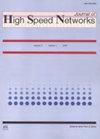基于物联网的城市轨道交通信号与控制
IF 1
Q4 COMPUTER SCIENCE, INFORMATION SYSTEMS
引用次数: 3
摘要
目前,我国交通信号控制机智能化水平较低,控制策略单一。不能根据实际交通情况进行相应的控制,合理有序引导交通流量的能力较低。为了了解城市轨道交通信号与控制系统,我们分析了列车调度子系统的需求,从功能实现和体系结构的角度设计了系统的整体架构,并构建了系统的无线传感器网络,这是其他专家的最佳选择。本文结合物联网(IoT)相关技术的研究,设计了智能交通信号控制机,对比了不同算法下的交通信号控制效果,并对相关轨道交通状况进行了统计研究。研究证明,基于物联网技术的传感器可以有效提高城市轨道交通信号的强度和控制效果。与其他算法技术相比,传感器算法的整体得分高于其他算法,比例高出约30%。本文在系统仿真操作终端上实现了各种数据的维护功能,构建了系统的总体框架;实现列车调度操作终端的主要功能,包括实现车站图、手动排线、自动触发路线、车站扣除和跳站设置、日志报表生成等列车调度功能。由此可见,物联网下的传感器算法对城市轨道交通信号控制系统有很大的促进作用。本文章由计算机程序翻译,如有差异,请以英文原文为准。
Urban rail transit signal and control based on Internet of Things
At present, China’s traffic signal control machine has a low level of intelligence and a single control strategy. It cannot make corresponding control according to the actual traffic situation, and its ability to direct traffic flow in a reasonable and orderly manner is low. In order to understand the urban rail transit signal and control system, we analyzed the requirements of the train dispatching subsystem, designed the overall architecture of the system from the perspective of function realization and architecture, and constructed the wireless sensor network of the system, which is the best for other experts. In this paper, combined with the research of related technologies of the Internet of Things (IoT), an intelligent traffic signal control machine is designed, and the traffic signal control effects under different algorithms are compared, and the relevant rail transit conditions are statistically studied. Studies have proved that sensors based on IoT technology can effectively improve the intensity and control effect of urban rail transit signals. Compared with other algorithm technologies, the overall score of the sensor algorithm is higher than other algorithms, and the ratio is about 30% higher. This article realizes the maintenance function of various data on the system simulation operation terminal, and builds the overall framework of the system; realize the main functions of the train dispatching operation terminal, including the realization of train dispatching functions such as station map, manual route arrangement, automatic route triggering, station deduction and station jump settings, and log report generation. This shows that the sensor algorithm under the IoT has a great promotion effect on the urban rail transit signal and control system.
求助全文
通过发布文献求助,成功后即可免费获取论文全文。
去求助
来源期刊

Journal of High Speed Networks
Computer Science-Computer Networks and Communications
CiteScore
1.80
自引率
11.10%
发文量
26
期刊介绍:
The Journal of High Speed Networks is an international archival journal, active since 1992, providing a publication vehicle for covering a large number of topics of interest in the high performance networking and communication area. Its audience includes researchers, managers as well as network designers and operators. The main goal will be to provide timely dissemination of information and scientific knowledge.
The journal will publish contributed papers on novel research, survey and position papers on topics of current interest, technical notes, and short communications to report progress on long-term projects. Submissions to the Journal will be refereed consistently with the review process of leading technical journals, based on originality, significance, quality, and clarity.
The journal will publish papers on a number of topics ranging from design to practical experiences with operational high performance/speed networks.
 求助内容:
求助内容: 应助结果提醒方式:
应助结果提醒方式:


